Have you ever baked something and realized after you took it out of the oven, sliced it, and tasted it, that you left out an important ingredient? That happened to me with this Quick White Bread, one of the breads for the Mellow Bakers’ new bread bake.
We’re baking through Dan Lepard’s The Handmade Loaf or The Art of Handmade Bread, depending on which version you have. I have both versions because I’m trying to learn the appropriate conversions for both North America and Europe. However, leaving out an ingredient was not supposed to be part of the process.
This was supposed to be an easy and quick loaf. So I decided to experiment with it. I adapted the recipe to include Heirloom 18th Century French Mediterranean Bread Flour from Anson Mills and puffed millet and even baked it in a Pullman pan. However, because I omitted the salt, the dough rose too quickly and collapsed during baking. You can see how it sunk in the photo below.
Instead of deeming this bread a failure, I decided to use it as a teachable moment. This is a perfect example of why you should always follow the first basic step of bread-baking: Mise en Place which means “everything in it’s place”.
I wrote these very words on my how to make bread page: “Begin by getting all of your tools and ingredients ready and within arms length. The success of your bread-baking experience depends on how organized you are so don’t skip this step.” I’m ashamed to say that I didn’t have my “Mise en Place” and somewhere along the way, I forgot the salt.
Salt serves a number of purposes in bread. It stabilizes the gluten structure which creates a better dough and adds flavor. It also slows down the fermentation process by dehydrating the yeast and bacteria. Technically, salt is an optional ingredient; however, if you’re going to omit it, you should use cold temperatures to slow down the fermentation process or reduce the rising times. I did neither for this bread so that’s why it fell.
Instead of baking the bread freeform, or in a regular loaf pan, I baked it in a Pullman pan. Here are photos of the process I used to shape and bake the loaf.
Although the flavor was a bit bland, all is not lost. This is a great toast bread which is what I was shooting for. I happen to like saltless breads such as Tuscan Bread so this isn’t a problem for me. I just toasted it, spread it with butter and it tasted yummy. I also made a grilled cheese sandwich with it using extra-sharp natural cheese. Delish!
I was going to make the bread again with the salt to show you the difference, but I used all of my heirloom flour so I’ll have to show you those results another day.
Happy Baking!
Cathy
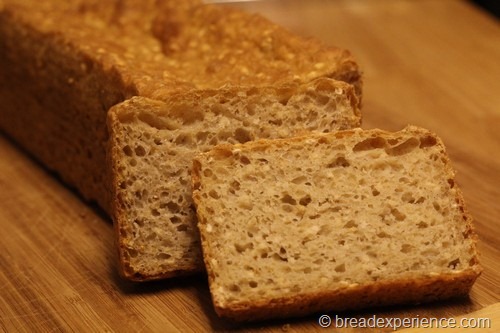
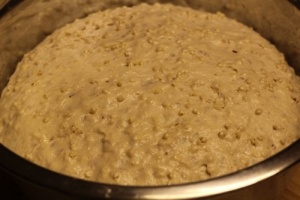
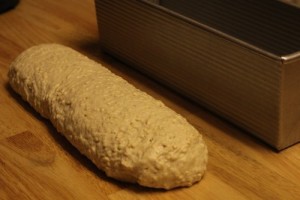
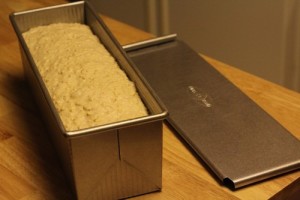
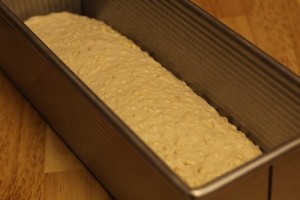
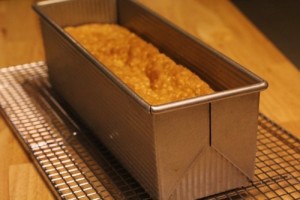
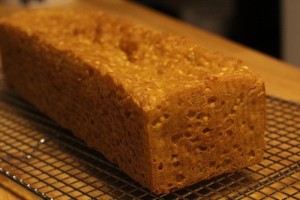
ray@garlicbuddha says
ah… forgetting the salt – we have all done that! Glad you still liked the result. Interested to see you use the pullman pan – i have seen them before but don’t really know what they are used for… what do you usually bake with them?
Cathy (breadexperience) says
Hi Ray,
I usually bake sandwich loaves using the Pullman pan. It has a lid which gives it the perfect shape and provides a nice crust.
Kathy Roberts says
Thank you for the info! I was distracted while mixing and forgot the salt. Now I know all is not lost since we butter our bread with salted butter and were shooting for good toasting bread.
Cathy says
Hi Kathy, I get distracted while mixing more times than I care to admit. Lionel Vatinet always says to taste the dough after mixing to make sure you didn’t forget the salt. If a professional bread baker has to do this, then we shouldn’t worry too much. Hope you enjoy your toasted bread. Happy Baking!
Ann Borden says
I baked raison buns last evening and forgot to add the butter. I had taken the butter out of frig, placed in mic for 10 seconds to soften, found the butter this am
Can you think of anything I can do with these raison buns other than throwing them into garbage. Many Thanks
Cathy says
Hi Ann, are the buns edible? Can you toast them? Or use them as bread crumbs or french toast or something?
Lynda says
Can you describe what the texture of the dough was like without salt? Was it any different? I am trying to figure out if I left out salt in my sourdough. I mixed all the dry ingredients in a large bowl to use when my starter was ready. And because it was days afterwards I can’t remember if I had added salt in there or not! I went ahead and assumed I did but the dough is acting very tough and I wonder if it’s due to lack of salt or lack of water. I did try tasting the dough but I couldn’t tell!
Cathy says
I didn’t realize I had left out the salt until the loaf collapsed in the oven and tasted bland when I tried it.
If dough feels tough during mixing, I typically add more water to keep it from tearing.